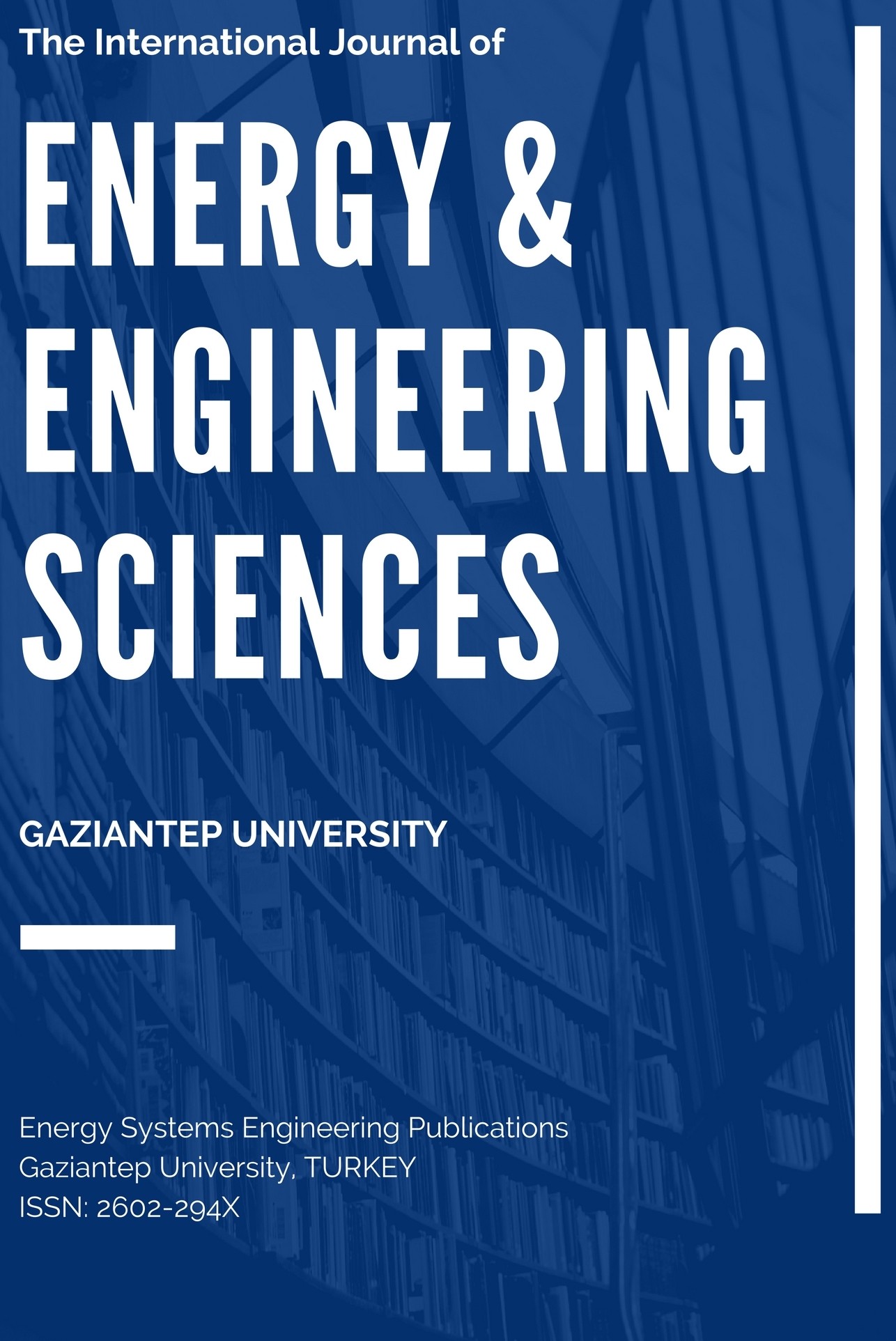THE STUDY OF THE EFFECT OF THE MOULD PARAMETERS ON THE MOULDING FORCE IN THE DEEP DRAWING PROCESS OF DP600 MATERIAL
THE STUDY OF THE EFFECT OF THE MOULD PARAMETERS ON THE MOULDING FORCE IN THE DEEP DRAWING PROCESS OF DP600 MATERIAL
Deep drawing metal forming, plate materials, radius of punch,
___
- Colgan, M., Monaghan, J., (2003). Deep Drawing Process Analysis and Experiment, Journal of Materials Processing Technology, 132: 35-41.
- Kara, E. (2011). DP500 Ve DP600 Sac Malzemelerin Derin Çekilebilirliğinin İncelenmesi. Gazi Üniversitesi, Ankara,1-94.
- Güneş, A.T. (2005). Pres İşleri Tekniği Cilt 2. Makine Mühendisleri Odası, Ankara, 1- 207.
- Bozdok, M. (2008). Advanced High-Strength Steel Product and Process, A Special Edition of In-Depth AHSS Case Studies Including Excerpts from the World Auto Steel AHSS Applications Guidelines, Auto/Steel Partnership, Michigan, 25.
- Çapan, L. (2003). Metallere Plastik Sekil Verme 4. Baskı. Çağlayan Kitabevi, İstanbul, 1-180
- Uzun, İ., Eriskin, Y. (2002). Sac Metal Kalıpçılığı. Milli Eğitim Bakanlığı Yayınları, Ankara. 1-360.
- Takahashi, M. (2006). Development of High Strength Steels for Automobiles. Nippon Steel Technical Report, 88.
- Shi, M. (2001). Formability Performance Comparison between Dual Phase and HSLA Steels. Iron & Steel Society, 39:165.
- Power, W. F. (2000). Automotive Materials in the 21st Century. Advanced Materials and Processes, 210.
- Deanna,S., (2001). Technology Transfer Dispatch No.6 Provides Valuable Information on the Selection of Advanced High-Strength Steels for ULSAB-AVC. Lorincz American Iron and Steel Institute, Detroiit, 76:84.
- Kishor, N., Kumar, R. (2002). Optimization of initial blank shape to minimize earing in deep drawing using finite element method. Journal of Materials Processing
- Technology, 130-131: 20-30Simith, A.D.,“Die Design Handbook”, Society of Manufacturing Engineers, Michigan, 10,1-12,43 (1990).
- Park, D.H., Huh, Y.M., Kang, S.S., “Study on punch load of non-axisymmetric deep drawing product according to blank shape”, Journal of Materials Processing Technology,130-131:89-94 (2002).
- Kim, H., Sung, J.H., Sivakumar, R., Altan, T., “Evaluation of stamping lubricants using the deep drawing test” International Journal of Machine Tools and Manufacture, 47: 2120-2132 (2007).
- Allen,S.J., Mahdavian, S.M., “The effect of lubrication on die expansion during the deep drawing of axisymmetrical steel cups”, Journal of Materials Processing Technology,199: 102-107 (2008).
- ISSN: 2602-294X
- Yayın Aralığı: Yılda 2 Sayı
- Başlangıç: 2016
- Yayıncı: Gaziantep Üniversitesi
GRAIN DIFFUSION AND DISPERSION OF CLAYEY SOILS IN A CONSOLIDATION PHENOMENON
Barış MAHMUTLUOĞLU, Mehmet Arslan TEKİNSOY, Baki BAĞRIAÇIK
Erhan KARA, Çetin KARATAŞ, Sevinç Zafer MUTLU
PWM CONTROLLED DC-DC BOOST CONVERTER DESIGN AND IMPLEMENTATION
Tolga ÖZER, Sinan KIVRAK, Yüksel OĞUZ
SIMULATION OF FLOW WITHIN THE DIFFERENT CAVITIES USING SST K-Ω TURBULENCE MODEL
Nehir TOKGOZ, Rahim HASSANZADEH, Besir SAHİN
OPTIMIZATION OF SPACING BETWEEN STAGGERED METAL HYDRIDE TANKS INTEGRATED FUEL CELL SYSTEM
İsmail HİLALİ, Refet KARADAĞ, Hüsamettin BULUT
NUMERICAL STUDY OF FLOW STRUCTURES WITHIN DIFFERENT CAVITIES USING LARGE EDDY SIMULATION
Rahim HASSANZADEH, Nehir TOKGOZ, Besir SAHİN
PITTING CORROSION BEHAVIOUR OF ST 37 STRUCTURAL STEEL IN SEVERAL CORROSIVE ENVIRONMENTS
Taha Yasin EKEN, Kafiye KARDELEN, Nuray CELEBI, Mehmet Fatih OKTEM
